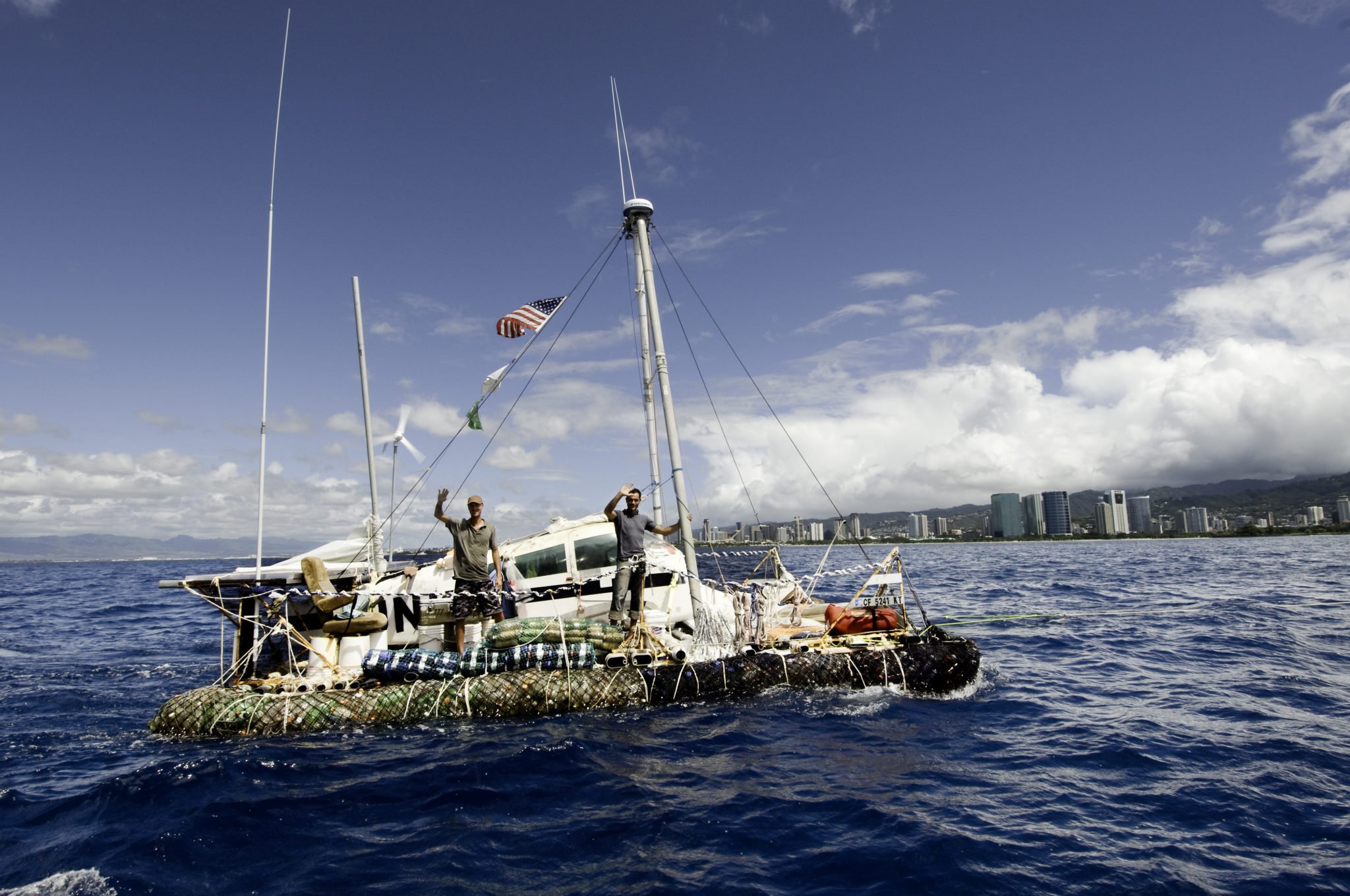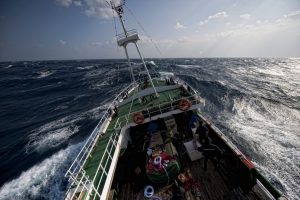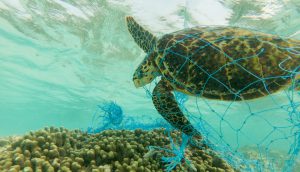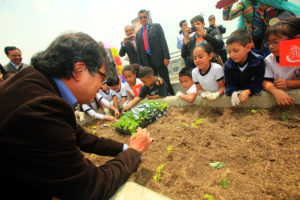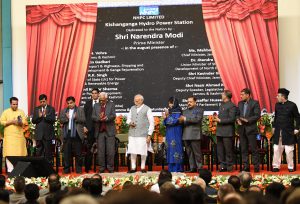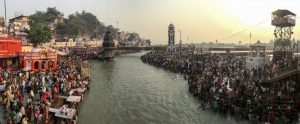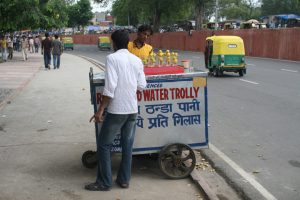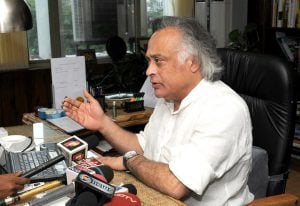“Gyres are circulation patterns in the ocean,” explains Marcus Eriksen, environmental scientist and founder of the 5 Gyres Institute, a US based non-profit organisation dedicated to reducing plastic pollution in the seas through science and education.
The north Pacific is where much of the rubbish from south-east Asia and North America migrates to. It’s a clockwise swirling current. A plastic bottle leaving California may end up on the coast of China, in five years or less, and then make its way back to the United States in a ten-year loop,” he continues.
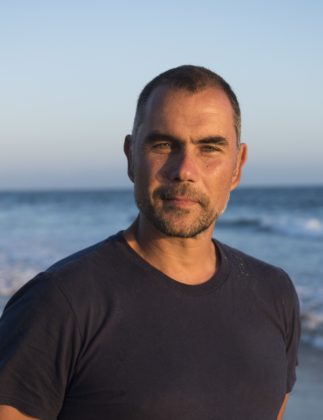
Marcus knows these gyres all too well. In his fascinating book Junk Raft, he recounts how he and friend, Joel Paschal, assembled a raft out of 15,000 plastic bottles, part of an airplane fuselage, a few recycled shipping masts, and other rubbish.
They then set off from Los Angeles on a three-month drift through doldrums and hurricanes, eventually reaching Hawaii. With a story to tell, Marcus has given countless presentations on the harm of plastics in the ocean.
Through his research, he has become known as one of the world’s experts on the Great Pacific Garbage Patch – a soup of floating microplastics far out in the Pacific Ocean. He began sailing there on expeditions with Captain Charles Moore, who is credited with discovering it.
Moore has spent most of the past two decades refuting the media claim that there is such a thing as a “garbage island twice the size of Texas”. What they actually found was a high concentration of shredded plastic, drifting in the north Pacific gyre.
Years spent scooping tiny fragments of plastic from the ocean waves have made Marcus an authority on the sources and solutions of plastic pollution. As the world looks to the crisis in our ocean, Marcus’ gaze is fixed on land. He believes the future of the ocean depends on improving waste systems to avoid plastic entering the ocean.
He has just returned from visiting petrochemical giant Dow Chemical, inventors of Styrofoam and the world’s biggest supplier of polyethylene.
“What they suggest is for people around the world to get better at collecting their thin-film packaging. To use it for energy, for cement kilns, or for chemical recycling. My idea is: the world is not going to do that!”
“The world does not have to subsidise bad design by getting better at collecting your stuff. It’s better to have cleaner stuff in the first place.”
Marcus is an advocate of Extended Producer Responsibility (EPR), the idea that manufacturers should extend their responsibility across a product’s lifecycle. At the same time, he recognises the role of personal responsibility, to stop littering, and municipal responsibility through better waste management.
“Our design choices are not great if in the 21st century we’re still using plastic for single-use items like straws, bags, wet wipes or stir sticks. I think industry needs to step up its game, and responsibility needs to be legalised.”
“Companies that do take the expense to find alternatives are at a disadvantage. We need extended producer responsibility to drive this design shift, to drive equity among all players.”
Marcus has met with strong resistance from the plastics industry in his long fight for EPR.
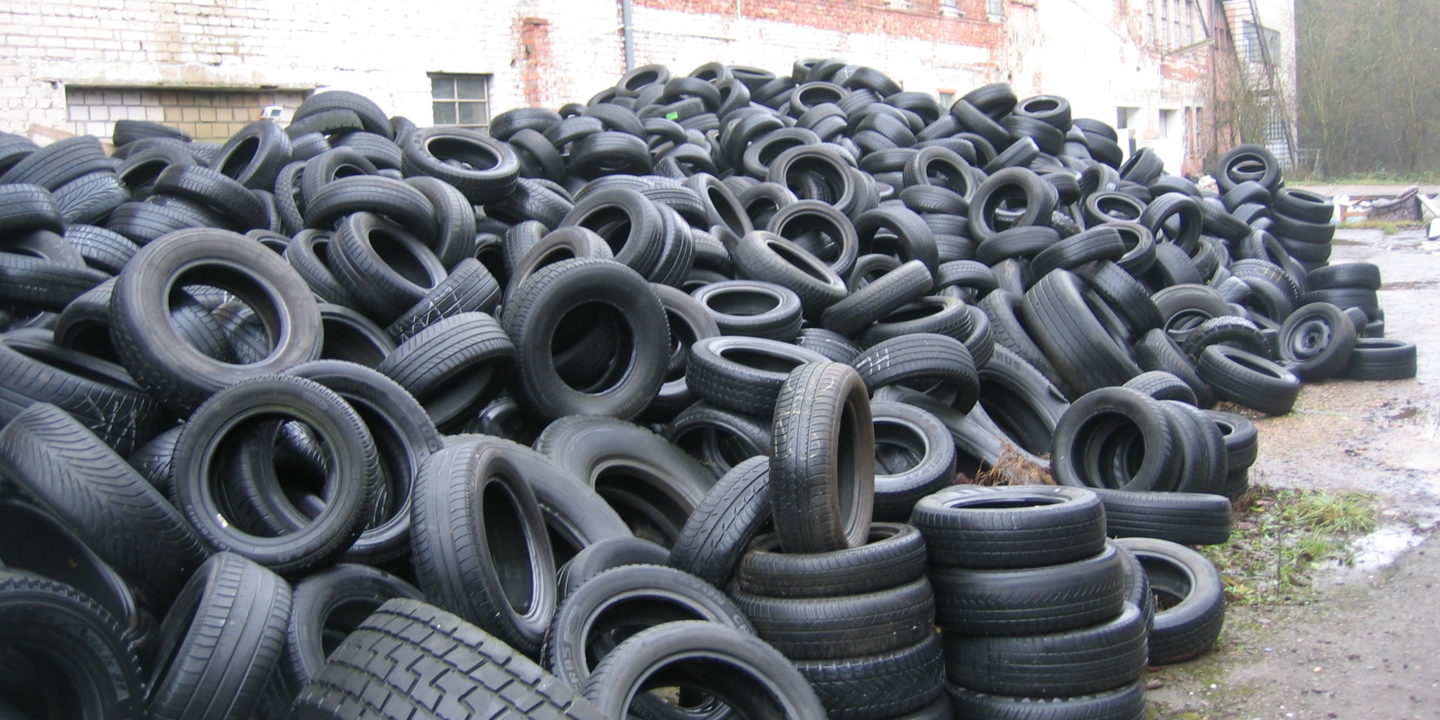
In 2015, he met with the vice president of the American Chemistry Council, the main lobby group for plastic producers in the United States, which he describes as a “bad first date”.
He says there is a “great divide” within the environmental movement between conservationists who are trying to bring the industry to the table, and environmental groups who frame this as a consumer problem. And believes that organisations focused on cleaning up coastal areas, such as the Ocean Conservancy (funded by the American Chemistry Council and Coca Cola) should be calling out the brands that produce these items.
“Back in the ’70s, companies like PepsiCo, Anheuser-Busch and Philip Morris were looking at the wave of public attention towards pollution. They controlled the narrative by putting the onus of the problem on people.
“One of their advertisements that became pretty famous was called ‘The Crying Indian’. In it, a Native American looks at a plastic bag blown across the street and sheds a tear. The tagline is, ‘people cause pollution, people can be the solution.’”
Marcus extends the criticism to another project that has attracted significant media attention: The Ocean Cleanup. This initiative by Dutchman Boyan Slat raised millions of dollars in funds to set up a plastics recovery system in the middle of the north Pacific.
“What’s floating in the north Pacific is less than one percent of one year’s production of plastics. It’s almost all maritime industry materials: fishing nets, fishing buoys, floats, and other kinds of lines and ropes.”
“If they were very honest and said, ‘we’re working on cleaning up fishing gear.’ I think the world would say, ‘fantastic!’. But when you start saying you’re going to solve the problem, and you keep on fundraising around this mythology – then you’re doing a disservice to people.”
In the face of this huge global challenge Marcus still finds cause for optimism.
“The most exciting thing I see happening is something called the ‘decentralised MRF’ (pronounced murf), Material Recovery Facility.”
Marcus gives an example from a project in India. “In Delhi, you get a waste pile that is 15 stories tall. It’s centralised: big trucks bring trash over and dump it into burn pits. It’s a big, giant, smoking pile of trash.”
“The decentralised model says, ‘okay, let’s go from community-to-community, and teach people how to sort their materials into organics and recyclables. And then let the waste pickers collect that material and earn money from those recyclables; the organics they can bring to the decentralised recovery facilities. So instead of having one dump, you’ve got 50–100 decentralised facilities that are really good at composting and recycling.”
With his new project Leap Lab, Marcus is travelling the world to support cities and communities to switch to these decentralised waste systems.
He is still an avid sailor, but, “on land is where it’s happening.”
